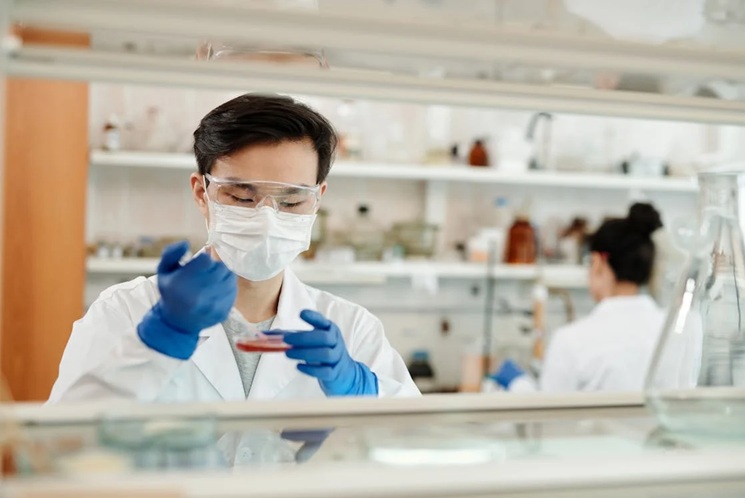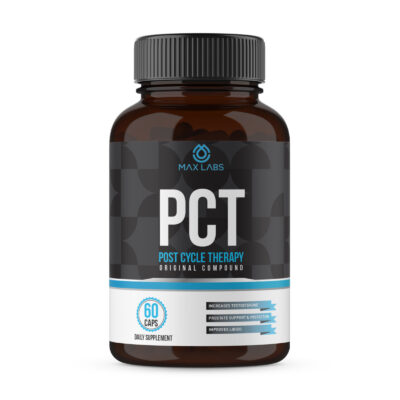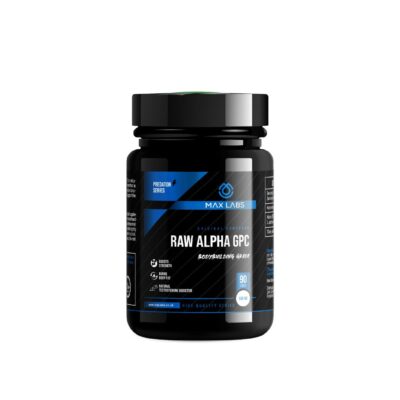GLP1R (glucagon-like peptide-1 receptor) agonists are a class of weight loss drugs that have soared in popularity in recent years, with semaglutide and liraglutide being two of the most well-known. With the success of GLP1R agonists, researchers have come up with drugs that aim to be even more effective than those that target GLP-1 alone.
A more recent introduction to the market is tirzepatide, a dual receptor agonist. This binds not only to GLP-1 receptors, but also GIP (glucose-dependent insulinotropic polypeptide) receptors, to produce even more significant weight loss results.
In an attempt to create an even more powerful weight loss drug, researchers have developed a triple receptor agonist, retatrutide. Retatrutide is a peptide that binds to:
- GLP-1
- GIP
- GCG (glucagon) receptors
Although it is still in clinical trials, it has been found to yield the most drastic weight loss results compared to single and dual-receptor agonist drugs.
This article will look at retatrutide and the side effects experienced when taking it. In order to understand the reason for these side effects, we will begin by briefly looking at what activation of each of the three target receptors does to the body.
The Three Target Receptors
Retatrutide is a single peptide that can bind to three different targets, the GLP-1, GIP, and GCG receptors. By looking at what the activation of each of these receptors does, we can appreciate how they work together synergistically to promote weight loss and improve blood glucose levels. This also helps to explain some of the side effects experienced.
GLP-1 Receptor
The activation of this receptor produces several effects throughout the body, especially along the digestive tract and in the brain.
In the stomach, gastric emptying is delayed, meaning food will remain in the stomach for longer than normal before moving on to the intestines (1), resulting in a longer-lasting sensation of fullness.
In the pancreas, insulin secretion from β cells is stimulated in response to glucose, and glucagon secretion is suppressed, helping to control blood sugar levels (2).
In adipose tissue, lipid oxidation is increased. Thermogenesis (the production of heat) is stimulated in brown adipose tissue, and the browning of white adipose tissue is induced. Thermogenesis increases energy expenditure, which promotes weight loss (3).
In the intestines, the transit of food can be altered, with food being passed more slowly through the digestive tract (4). The immune cells in the intestines and gut microbiota are modulated, which may help reduce inflammation (5).
In the brain, the parts responsible for controlling appetite are affected, causing a reduction in appetite and food intake (6). The brain may also be protected from inflammation (7).
GIP Receptor
GIP receptor agonism, just like GLP1R agonism, produces an increase in insulin secretion from pancreatic β cells in response to elevated blood glucose and promotes lipid oxidation and thermogenesis (8,9).
Unlike GLP1R agonists, GIP agonists:
- Can promote glucagon secretion in response to low blood glucose
- Have minimal effects on gastric emptying
- Have a weaker effect on appetite alone, but are stronger when activated in combination with GLP-1 receptors
- Have milder effects on the CNS (central nervous system)
Alone, GIP receptor agonists produce a mild therapeutic effect, but when combined with GLP1R agonism, a stronger, synergistic effect is seen (10). Currently, the only drug that agonises both GLP-1 and GIP receptors is tirzepatide.
GCG Receptor
With GCG receptor activation on top of this, we can see the following additional effects:
A further increase in lipid metabolism, promotion in the breakdown of fat (lipolysis), and an increase in energy expenditure, all of which promote the burning of calories and weight loss (11,12).
How Does Retatrutide Compare to Other Similar Drugs?
Compared to drugs that target GLP-1 and GIP receptors, initial research suggests that retatrutide works even more effectively than GLP1R agonists and the dual receptor agonist, tirzepatide. Retatrutide was able to reduce weight by up to 24.2% in one study conducted as a phase 2a trial (13) and reduce HbA1c by up to 2.2% (14). While the severity of side effects associated with retatrutide is similar to those observed with other GLP-1 receptor agonists and tirzepatide, patients are relatively more likely to discontinue retatrutide due to adverse effects (13,15).
Side Effects
- Loss of appetite
- Nausea
- Vomiting
- Diarrhoea
- Constipation
- Increase in heart rate
- Hypersensitivity reactions
GI (gastrointestinal) side effects are the most common complaint documented in studies (13,15), and improve over time. Here are the side effects we know of so far, based on findings from human trials:
Loss of Appetite, Nausea, and Vomiting
Since retatrutide slows gastric emptying and acts directly on regions of the brain that control hunger, people who have taken it experience a loss of appetite and may not feel hungry for longer than normal after a meal. This can also lead to the feeling of nausea, with some people experiencing vomiting.
Diarrhoea and Constipation
Since gut motility is generally decreased while taking retatrutide, the body will have more time to absorb water from food, which could lead to constipation. Despite the slower passage of food through the intestines, some people may also experience diarrhoea. The exact mechanism behind this is not known, although there are speculations that this could be due to changes in gut hormone signalling or the gut microbiota.
Increase in Heart Rate
Retatrutide can increase resting heart rate by up to 6.7 beats per minute. GLP1R activation is known to cause an increase in heart rate by stimulating the sympathetic nervous system, and the activation of glucagon receptors in the heart can also contribute to an increase in heart rate. This effect on the heart can cause mild to moderate arrhythmias in some people.
Hypersensitivity Reactions
Some people have exhibited hypersensitivity (immune) reactions to retatrutide, although these reactions have not been serious and are not common (16).
Nausea, diarrhoea, and vomiting are the most commonly reported side effects, followed by constipation. Most of these side effects are dose-dependent, so they can be controlled to some degree through dosing. They tend to be mild to moderate in severity and decrease over time, as the body becomes accustomed to the drug.
Limitations
Because it is still in clinical trials, retatrutide has not yet been approved for use as a drug. For this same reason, we have limited data on its effectiveness and side effects. So far, it looks as though retatrutide may have an exceptionally strong ability to promote weight loss, and comes with some of the side effects that we have seen from GLP1R agonists.
GLP1R agonists and tirzepatide bring about similar side effects to retatrutide but are also known to cause inflammation of the pancreas and gallbladder. So far, these are not side effects that have been noted in trials involving retatrutide. Whether this is because retatrutide does not cause these problems or because we are simply lacking data, we don’t yet know.
Conclusion
Retatrutide is a potent peptide, capable of promoting weight loss and improving blood sugar control. The activity of this drug bears many similarities to currently available drugs, so it is no surprise that retatrutide’s side effects are similar to those of GLP1R agonists and tirzepatide. Retatrutide is currently undergoing Phase 3 trials, after which we will hopefully understand more about how effective it is and how well it is tolerated.
👉 If you are from the UK and want to buy retatrutide for research purposes, look no further than UK SARMs.
References
1. Hiramoto B, McCarty TR, Lodhia NA, et al. Quantified Metrics of Gastric Emptying Delay by Glucagon-Like Peptide-1 Agonists: A Systematic Review and Meta-Analysis With Insights for Periprocedural Management. Off J Am Coll Gastroenterol ACG. 2024;119(6):1126. doi:10.14309/ajg.0000000000002820
2. Komatsu R, Matsuyama T, Namba M, et al. Glucagonostatic and Insulinotropic Action of Glucagonlike Peptide I-(7–36)-Amide. Diabetes. 1989;38(7):902-905. doi:10.2337/diab.38.7.902
3. Decara J, Arrabal S, Beiroa D, et al. Antiobesity efficacy of GLP-1 receptor agonist liraglutide is associated with peripheral tissue-specific modulation of lipid metabolic regulators. BioFactors. 2016;42(6):600-611. doi:10.1002/biof.1295
4. Bellavance D, Chua S, Mashimo H. Gastrointestinal Motility Effects of GLP-1 Receptor Agonists. Curr Gastroenterol Rep. 2025;27(1):49. doi:10.1007/s11894-025-00995-3
5. Alharbi SH. Anti-inflammatory role of glucagon-like peptide 1 receptor agonists and its clinical implications. Ther Adv Endocrinol Metab. 2024;15:20420188231222367. doi:10.1177/20420188231222367
6. Moiz A, Filion KB, Tsoukas MA, Yu OHy, Peters TM, Eisenberg MJ. Mechanisms of GLP-1 Receptor Agonist-Induced Weight Loss: A Review of Central and Peripheral Pathways in Appetite and Energy Regulation. Am J Med. 2025;138(6):934-940. doi:10.1016/j.amjmed.2025.01.021
7. Siddeeque N, Hussein MH, Abdelmaksoud A, et al. Neuroprotective effects of GLP-1 receptor agonists in neurodegenerative Disorders: A Large-Scale Propensity-Matched cohort study. Int Immunopharmacol. 2024;143:113537. doi:10.1016/j.intimp.2024.113537
8. Holst JJ, Rosenkilde MM. GIP as a Therapeutic Target in Diabetes and Obesity: Insight From Incretin Co-agonists. J Clin Endocrinol Metab. 2020;105(8):e2710-e2716. doi:10.1210/clinem/dgaa327
9. Yu X, Chen S, Funcke JB, et al. The GIP receptor activates futile calcium cycling in white adipose tissue to increase energy expenditure and drive weight loss in mice. Cell Metab. 2025;37(1):187-204.e7. doi:10.1016/j.cmet.2024.11.003
10. Nauck MA, D’Alessio DA. Tirzepatide, a dual GIP/GLP-1 receptor co-agonist for the treatment of type 2 diabetes with unmatched effectiveness regrading glycaemic control and body weight reduction. Cardiovasc Diabetol. 2022;21(1):169. doi:10.1186/s12933-022-01604-7
11. Zhang S, Yu B, Xu J, et al. Quantitative Comparison of Glucagon-Like Peptide-1 Receptor Agonists on Weight Loss in Adults: A Systematic Review and Model-Based Meta-Analysis. Diabetes Technol Ther. 2025;27(6):422-429. doi:10.1089/dia.2024.0533
12. Salem V, Izzi-Engbeaya C, Coello C, et al. Glucagon increases energy expenditure independently of brown adipose tissue activation in humans. Diabetes Obes Metab. 2016;18(1):72-81. doi:10.1111/dom.12585
13. Jastreboff AM, Kaplan LM, Frías JP, et al. Triple-Hormone-Receptor Agonist Retatrutide for Obesity – A Phase 2 Trial. N Engl J Med. 2023;389(6):514-526. doi:10.1056/NEJMoa2301972
14. Rosenstock J, Coskun T, Hartman ML, et al. 266-OR: Retatrutide, an Agonist of GIP, GLP-1, and Glucagon Receptors, Improves Markers of Pancreatic Beta-Cell Function and Insulin Sensitivity | Diabetes | American Diabetes Association. Diabetes. 2024;73(Supplement_1). doi:https://doi.org/10.2337/db24-266-OR
15. Mikhail N. Retatrutide as a Novel Treatment for Obesity and Type 2 Diabetes. Curr Res Diabetes Obes J. 2023;16(5). doi:10.19080/CRDOJ.2023.16.555949
16. Pasqualotto E, Ferreira ROM, Chavez MP, et al. Effects of once-weekly subcutaneous retatrutide on weight and metabolic markers: A systematic review and meta-analysis of randomized controlled trials. Metab Open. 2024;24:100321. doi:10.1016/j.metop.2024.100321







